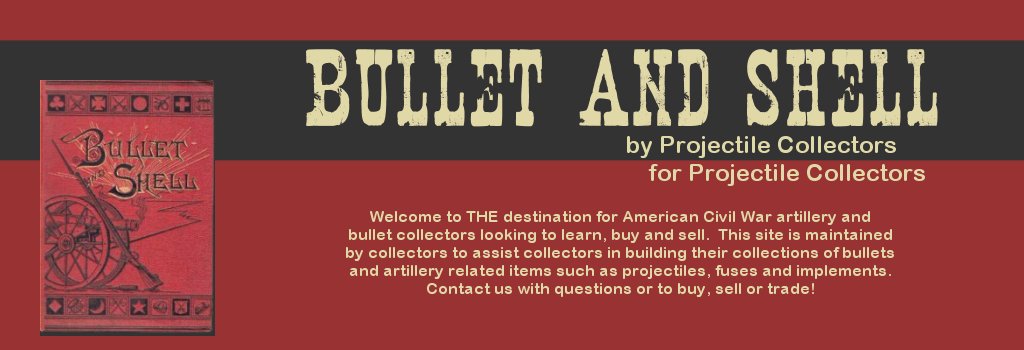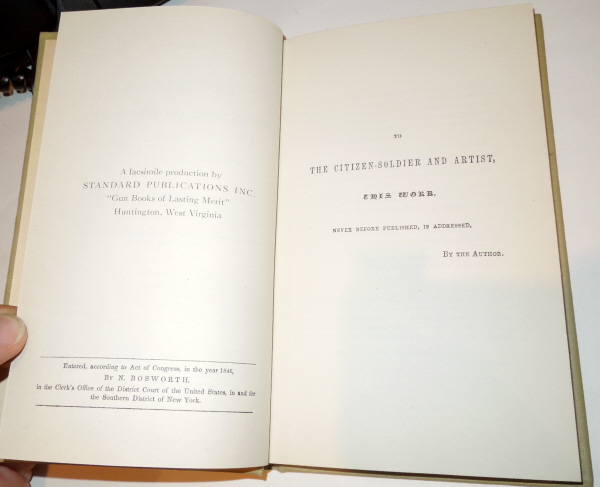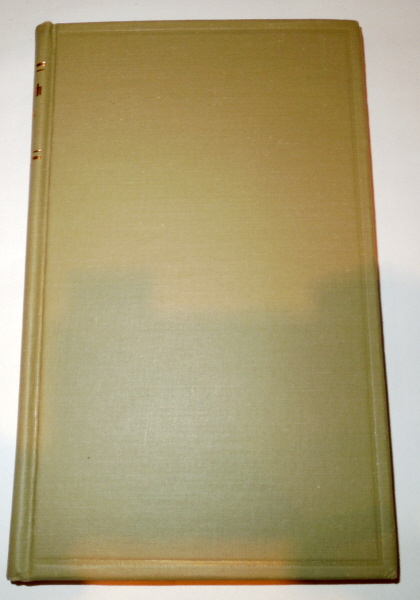

Item Number: L00060
Title: Bosworth on the Rifle
Author: N. Bosworth
Edition: Reprint of the 1846 edition
Price: $10
Shipping: Not included
Description:A Treatise on the Rifle, Musket, Pistol and Fowling-piece: Embracing Projectiles and Sharp-Shooting.
In this book, Bosworth advocates for the military adoption of the rifle, and makes many recommendations to improve the accuracy of the military musket (primarily by reducing the charge to as little as 1/8th). Bosworth goes into great detail on the difference between the ballistics of a smoothbore and rifled barrel, and from his experiments we can get some interesting data on what kind of accuracy a smoothbore weapon is capable of.
In his first experiment, Bosworth commissioned an excellent gun, finished as a rifle in every way except that the barrel was left smooth. Testing against a target forty yards distant, the shots averaged a distance of 3.5 inches from the center of the target. Bosworth then had the gun rifled, and this time the balls formed a single hole when the weapon was tested again. Clearly the rifle is the more accurate weapon, but even so, most people wouldn’t believe that a smoothbore gun could achieve that kind of accuracy even at 40 yards.
While the inaccuracy inherent to a smoothbore firearm is often falsely attributed to the ball “bouncing down the barrel and flying off in a random directionâ€, Bosworth gets it right: “Were it possible to make a smooth-bored gun perfectly straight, a ball perfectly round, of equal density in all its parts, provided it did not turn upon any axis, and kept the same side to the front throughout its course, the ball in such case would fly with the same accuracy as a rifle-ball; but all balls from smooth-bored guns, and all shot, even down to a charge of drop-shot, are liable to turn more or less upon an axis at right angles to their course. This is the cause of the irregularity in the flight of balls from smooth-bored guns.â€
Bosworth gives these tips for achieving tolerable accuracy- a perfectly straight bore, a perfectly round ball, a moderate charge, good sights, and a lock that is not too powerful. “By attending closely to these points, a good French musket may be prepared, that would hit, on an average, one turkey in four, at continuous shooting, at the distance of a hundred yards.â€
Even so, Bosworth considers the muskets then in use the worst for accuracy- “It is out of proportion in point of size, the calibre being too great for the weight of the piece, and the strength of men, reckoning their average weight as admitted, to be one hundred and fifty pounds. A ball projected with a full war-charge, can not be relied upon for any kind of accuracy; and the recoil is too severe for the strength of an ordinary soldier.†Perhaps the heavy, thick-barreled muskets of the 16th century would have been much better for accuracy than the light muskets of the 19th.
 |
 |
 |
 |